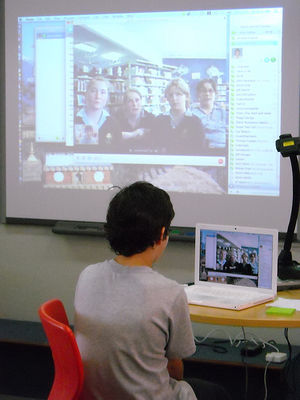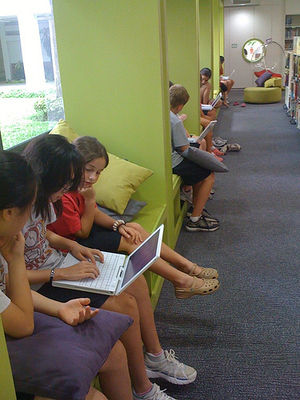The Learner in 2020
Contents
Strategic Context – The Learner in 2020
Are we preparing adequately for “tomorrow’s learners”? What will “learners” look like in 2020? Who will they be? What will they expect of us? How might technology develop, and with what implications for teaching and learning?
Comment: This discussion by its very nature will be speculative, but nonetheless helpful to prompt reflection on the assumptions we are currently making and which inform our shorter term decision making.
The Future Learner
http://wikieducator.org/images/5/57/Young_learners.jpg
What will the learner be like in 2020 - the learner in 2020 is likely to be at least in Primary School now given our current demographic with 64% of our learners being under 25. They were likely born post 2000, hence the term Millenials.
http://www.youtube.com/watch?v=hzCBtsvtD8I&feature=related
http://www.youtube.com/watch?v=VehkaFOHO1A&feature=related
Pedagogy
| Why the pedagogy (the method, practice and art of teaching) needs to change? |
Key Trends
Now what are the Key Trends in Technology that we currently are aware of and will likely affect how we plan and deliver future services - http://wp.nmc.org/horizon2011/sections/trends/
- The abundance of resources and relationships made easily accessible via the Internet is increasingly challenging us to revisit our roles as educators in sense-making, coaching, and credentialing.
- People expect to be able to work, learn, and study whenever and wherever they want.
- The world of work is increasingly collaborative, giving rise to reflection about the way student projects are structured.
- The technologies we use are increasingly cloud-based, and our notions of IT support are decentralized. Note: definition of cloud computing http://en.wikipedia.org/wiki/Cloud_computing
Key challenges
- Digital media literacy continues its rise in importance as a key skill in every discipline and profession.
- Appropriate metrics of evaluation lag behind the emergence of new scholarly forms of authoring, publishing, and researching.
- Economic pressures and new models of education are presenting unprecedented competition to traditional models of the university.
- Keeping pace with the rapid proliferation of information, software tools, and devices is challenging for students and teachers alike.
These are taken from the Horizon Report which you can see at this address http://wp.nmc.org/horizon2011/sections/executive-summary/
Future Technologies
- Electronic Books - they're here! and they are taking off, the reproduction cost an E book is near zero once the first one is written. http://wp.nmc.org/horizon2011/sections/electronic-books/
Here is a link to a site where you can rent e-textbooks - This area is rapidly progressing as publishers get on board. http://www.coursesmart.com/
- Mobile Devices - They are here now and rapidly becoming the internet capable device of choice. http://wp.nmc.org/horizon2011/sections/mobiles/
Some useful reading on this at this link http://www.educause.edu/EDUCAUSE+Quarterly/EDUCAUSEQuarterlyMagazineVolum/AreYouReadyforMobileLearning/157455
- Augmented Reality 3- 5 years.http://wp.nmc.org/horizon2011/sections/augmented-reality/
This is moving really fast and has accelerated - note Ipad apps already appearing - have a look at this link http://www.youtube.com/watch?v=9txpbfDbq6I&feature=player_embedded#at=19
or this one http://mashable.com/2009/12/05/augmented-reality-iphone/
- Game based Learning http://wp.nmc.org/horizon2011/sections/game-based-learning/
Think of the flight simulators (as an extension of game based reality)
Have a look at how Capella University uses 2nd life to teach programming http://secondlife.com/destination/capella-next-generation-learning
A useful article - here http://www.newmedia.org/game-based-learning--what-it-is-why-it-works-and-where-its-going.html
- Gesture based Computing - imagine your Wii on steroids http://wp.nmc.org/horizon2011/sections/gesture-based-computing/
or surgery using the ipad and gestures in this example http://www.youtube.com/watch?v=n5nbNIpqdAY&feature=related
Strategy Development
| So what type of questions does this raise for our future strategy and how we invest in our future developments
Considering factors such as:
|
Note
All this material is sourced from the Internet - and is "remixed" for your consideration.
- A final video clip on why we need to change http://www.youtube.com/watch?v=zDZFcDGpL4U
PS: Did I forget to mention OERS - they will have a significant impact of accessibility of and sharing of information in the future http://wikieducator.org/OERF:Home

